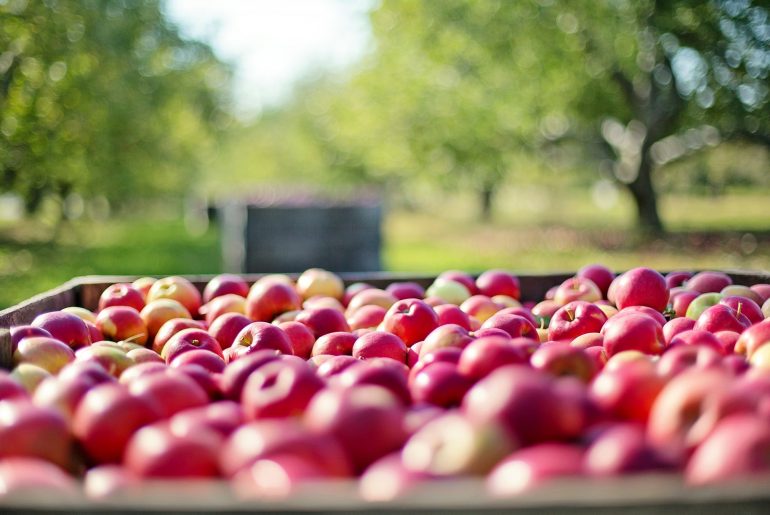For many people, autumn means one thing: apples. Families love heading to the orchard and loading up on bags full of apples for making devious homemade applesauce, pies, and cobblers. But don’t let your enjoyment of those tasty fall treats end earlier than it needs to. Believe it or not, some varieties of apples can last you all the way through March. They just have to be stored the right way.
Also see, the best apples for eating fresh.
Apples are abundant in the fall, meaning you can buy them at cheaper prices and stock up. You’ll save money by buying in bulk, and you’ll also avoid grocery store apples which can be coated in unnatural waxes or doused with chemicals used to delay their ripening.
Here’s everything you need to know about storing apples for winter:
What type of apple should you buy
Apples come to maturity between late July to late October. Generally speaking, apples that mature later are better suited to last through winter. These apples have thicker skins and harder flesh. While there are too many varieties to name them all, a few popular apples that store well are Golden Delicious, Rome, Red Delicious, Fuji, McIntosh, and Granny Smith.
Take advantage if you have the option to pick your own. That way you know they haven’t been hanging around long. Never pick apples that have already fallen from the tree. These apples, while still delicious to eat now, are too ripe for long-term storage.
Also, get apples into cold storage as quickly as possible. The sooner you get them stored, the longer they’ll keep.
Inspect all apples
Even if you bought several bushels, you’re going to want to examine each apple before storing. Check for bruises, cuts, cracks, soft spots, rotting, or bug damage. Only hard, perfect fruit is suitable for storage. Cut out blemishes and use imperfect apples immediately because they’re likely to rot relatively soon. Always handle apples carefully to avoid bruising them.
Sort by size and type
Different varieties of apples ripen at different rates throughout winter, so if you store them separately, you’ll be able to easily see which apples should be eaten next. Also sort by size. Small apples store better and ripen more slowly than larger ones, so separating sizes will let you see which apples are ready to eat.
Prep for storage
Wrap each able in newspaper before you place it in a box or basket with the other apples of its size and variety. Wrapping in newspaper is not necessary, but you know the saying about one bad apple. If the apples are wrapped in newspaper, it will help protect a bad apple from coming in contact — and ruining — the rest of the apples.
Storage
Apples can be stored in a cool basement, garage, fruit cellar, shed, refrigerator or anywhere with the constant ideal storage temperature of 33-38ºF and 90 percent humidity. If the temperature dips below 32ºF apples will likely suffer freeze damage, and if the temperature rises above 40º they will ripen too quickly. Wherever you choose, make sure it’s also rodent-proof.
Never store apples near potatoes or onions or garlic. Potatoes release a gas that can cause apples to spoil, and onions and garlic can alter the taste.
Check apples often
Check apples regularly for signs of ripening or spoilage. Remove any ripe (eat) or rotting (toss) apples as soon as possible from the rest of lot before they have the chance to spoil others.
Use them up
With proper storage, you can expect your apples to last three to six months, depending on variety. Once you bring apples from storage to your kitchen and they sit at room temperature, they’ll ripen in no time, so be prepared to eat up and enjoy!
For fall baking supplies and fun kitchen gadgets, visit everybodyshops.com.
Also: Old Fashioned Caramel Apple recipe.




